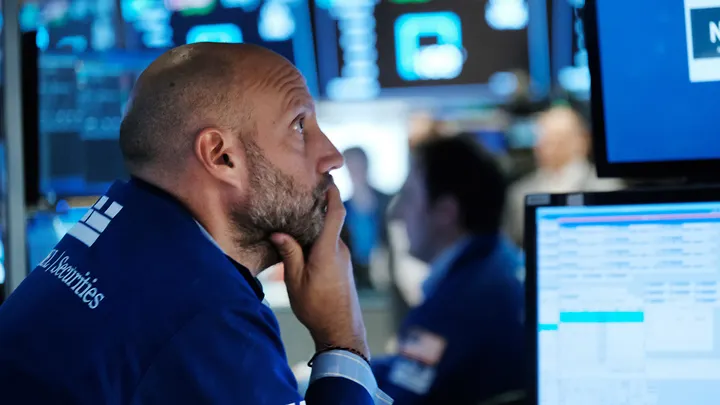
The sizable rally in the U.S. stock market over the past month is likely to fizzle out by the end of next year amid a number of growing economic headwinds, according to JPMorgan Chase.
Dubravko Lakos-Bujas, the chief global equity strategist at JPMorgan, said in a recent analyst note that slowing economic growth, the rapid depletion of household savings and ongoing geopolitical turmoil could trigger a steep decline in the S&P 500 over the course of 2024.
“Absent rapid Fed easing, we expect a more challenging macro backdrop for stocks next year with softening consumer trends at a time when investor positioning and sentiment have mostly reversed,” Lakos-Bujas wrote in the note.
The benchmark index could fall to 4,200 by the end of 2024 — down about 8% from current levels, according to the JPMorgan strategists. It is the most bearish outlook yet among major Wall Street firms. Even Morgan Stanley chief U.S. equity strategist Michael Wilson — a longtime Wall Street bear — sees the S&P 500 ending 2024 around 4,500.
“We expect a more challenging macro backdrop for stocks next year with softening consumer trends at a time when investor positioning and sentiment have mostly reversed,” the JPMorgan note said.
Dwindling household savings, steep borrowing costs that are hovering near the highest level in decades and cooling global demand are to blame for the lackluster projection, Lakos-Bujas wrote.
“Absent significant monetary or fiscal policy supports, we see consensus growth assumptions at this point [as] more hope than realistic,” he wrote in the note.
The gloomy forecast comes after a volatile year for the stock market.
All three indexes tumbled in mid-2023 amid fears that the Federal Reserve would raise interest rates higher than previously expected — and hold them at peak levels for longer. But they have quickly recouped those losses, with the S&P 500 rising nearly 11% since it hit bottom at the end of October.
The benchmark index is up nearly 20% since the start of the year, while the Dow Jones Industrial Average has climbed more than 36%. The tech-heavy Nasdaq Composite, meanwhile, has also jumped about 36%.
























